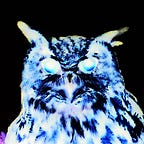Kicking The Doors Down: Suzi Quatro
Early rock musicians and their fans liked to think of themselves as wild and rebellious. Still, in one fundamental way, rock culture was as conservative as it gets: When it exploded commercially, rock and roll was dominated by men, mostly young and white.
It is not just about who the musicians were but about who controlled the record labels and the radio stations. This state of affairs was never debated — it was just taken as the natural order of things.
My previous post looked at some of the earliest pioneering women in rock, including the Pleasure Seekers, a Detroit-based all-female band that made a bit of a splash and became a regional headliner. They had begun raising hell before raising hell was even a thing. Their most famous alumna is Suzi Quatro. She was the tip of the spear that broke through a wall of resistance to women doing loud music.
It may be hard for us to understand just how big a challenge it was for Quatro (one of three sisters in the Pleasure Seekers) to go solo, and how hard she had to fight to keep doing her thing.
For over a decade, almost all of the women in rock were singers like Grace Slick and Janis Joplin. When women tried to break in as instrumentalists or band leaders in the late 1960s, they met indifference, if not outright hostility. And in fact, for Quatro, it didn’t even happen in the U.S. and probably couldn’t have.
Quatro was stuck in a box with the Pleasure Seekers. Although their music had a tough edge that even most male bands didn’t have, media coverage of the band focused almost entirely on their attractiveness, and their promotional packaging required them to play along.
It took a British producer, Mickie Most (who, over the years, worked with a dozen top acts, including the Animals, Jeff Beck, and Herman’s Hermits), to persuade her that there was an opportunity for a woman who didn’t want to play the usual game. Most persuaded her to move to the U.K. and take a shot at it there.
After moving to London, Suzi doubled down on the tough girl image. Most was under pressure to glam her up, but she refused, and he supported her choice. She released a few singles, experimenting with various sounds. Most teamed her up with a pair of songwriters, Nicky Chinn and Mike Chapman, with a track record of hits. She auditioned band members, one of whom, Len Tuckey, would become her lead guitarist through several albums, co-composer of much of their material, and husband and father of her kids.
Through it all, she continually broke the mold. She led her own band, played the bass — itself not a “girly” instrument — and co-wrote half their music (Chinn and Chapman wrote around a third, and she added in covers of rock classics like “All Shook Up.”).
A lot of her songs were sexually aggressive, which made her even more outrageous for the times. Later in her career, when she was trying to break back into the U.S. market, her producers kept trying to tone her down and “cutify” her, and though she bent, she didn’t break. The American critics still ignore her, but she found favorable coverage and a big fan base in Europe and Japan.
Suzi Quatro continues touring and raising hell and has sold over 60 million records and counting.
“Glycerine Queen” (1973; Quatro/Tuckey)
This performance is from her 1975 Japan tour.
…..
“Johnny B. Goode” (1977) (Chuck Berry cover)
Quatro was regularly charting in Europe, Australia, Japan, and the U.K. but wasn’t garnering the same level of recognition in the U.S. However, one of her fans was the daughter of Garry Marshall, the producer of the #1 American TV sitcom “Happy Days.” Marshall offered Quatro a role on the show. They came up with the character Leather Tuscadero, a part-time delinquent and leader of a local rock band.
Leather appeared in several episodes, often performing songs from Quatro’s albums, and became one of the most popular characters on the show despite not being a regular. Here she is doing a cover of Chuck Berry’s iconic hit.
Listen for her bass line; she crushes it.
…..
“Back to the Drive” (2006; Chapman)
Quatro was three years into grandmotherhood at the time of this performance. You would never know it.
As Loretta Swade says in her 2009 interview with Quatro:
“Over forty years on, and the raunchy rock chick is stronger, wiser and even feistier than those legendary days of the 70’s when she took to the stage, a 5-foot fireball clad in black leather, brandishing an enormous bass guitar and belting out her famous hit Can the Can.”
(Note: the video originally posted here was taken down. Here is the official audio — Charles 1 Jan 2023)
…..
“Cat Size” (1974; Quatro/Tuckey)
It is almost obligatory for hard rockers to put out the occasional ballad, just to show they have a softer side. Most such ballads end up as filler on albums full of louder stuff. This one is much more than that. It’s a heartbreaker, and Suzi’s voice is perfect for it.
It would have been worthy of a cover by any of the great female country singers. You can also imagine a metal vocalist like Rob Halford doing it justice. It’s that kind of song.
…..
Coming up: The Runaways, Joan Jett, and more.
